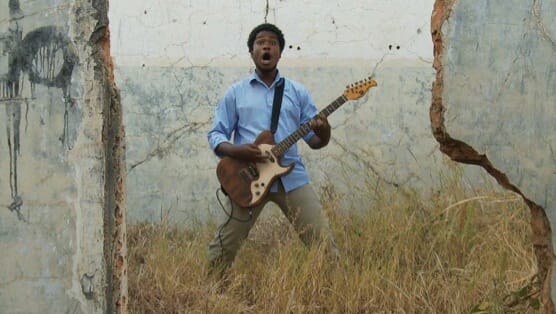Death Metal Angola

The first few minutes of Death Metal Angola don’t feel like the introduction to a documentary. They’re something more akin to the opening sequence of a horror film. We’re presented with a quick lesson on Angola’s history in the 20th century—the 15-year war its people fought to regain their independence from Portugal (ending in 1975), the ensuing civil strife that erupted immediately thereafter (lasting until 2002), and a full tally of the death and suffering both conflicts inflicted upon its inhabitants as well as the land. A voiceover tells us a ghost story that frankly could be made into its own creepy stand-alone feature. All is shot in shadow. We half expect a sunken-eyed wraith to pop out and steal the breath from us.
Somewhere lodged in that preamble is a brief sequence of a young man jamming on an electric guitar, picking out cruelly melodic riffs through a tiny amplifier as he growls into a microphone. That could be construed as a means of setting the mood, but Death Metal Angola’s actual tone is hopeful rather than nihilistic. This is not a picture about the specters and shades that haunt a corner of the world purged by bloodshed. Rather, it examines how the survivors of those atrocities find common cause through music. You may have figured the musical genre from the title—and if you’re not the metal type, you may also choose to pass the film over.
You shouldn’t. Death Metal Angola does more than paint a portrait of hardship for its viewers, or lecture us on regional devastation that isn’t glamorous enough to make the evening news. Its primary concern is the power of art to bring people together, and to give them a filter for their emotions, their struggles, their misfortunes. Death metal seems the genre that’s least likely to uplift listeners; it’s angry, aggressive, an archetype that could literally be described as sound and fury—and that’s exactly the point.
-

-

-

-

-

-

-

-

-

-

-

-

-

-

-

-

-

-

-

-

-

-

-

-

-

-

-

-

-

-

-

-

-

-

-

-

-

-

-

-








































